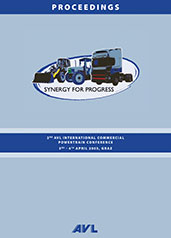Technical Paper
"Quattro"-Drive for Every Day Driving
1984-01-01
845070
An essential feature of the Audi Quattro permanent four-wheel drive system is in the inter-axle differential located on the hollow output shaft in the gearbox: the drive is taken from this differential forward to the front differential through the inside of the hollow shaft, and rearward to a propellor shaft driving the rear differential. The major advantages in everyday driving include improved traction and a reduced tendency toward throttle induced changes of attitude. The greater traction allows not only better progress in difficult road conditions; it also gives better acceleration in difficult traffic situations, such as when joining a busy main road. The more easily predictable handling response to throttle changes means that Quattro vehicles have better tracking stability. Altogether, the active safety and "roadability" are considerably improved.

